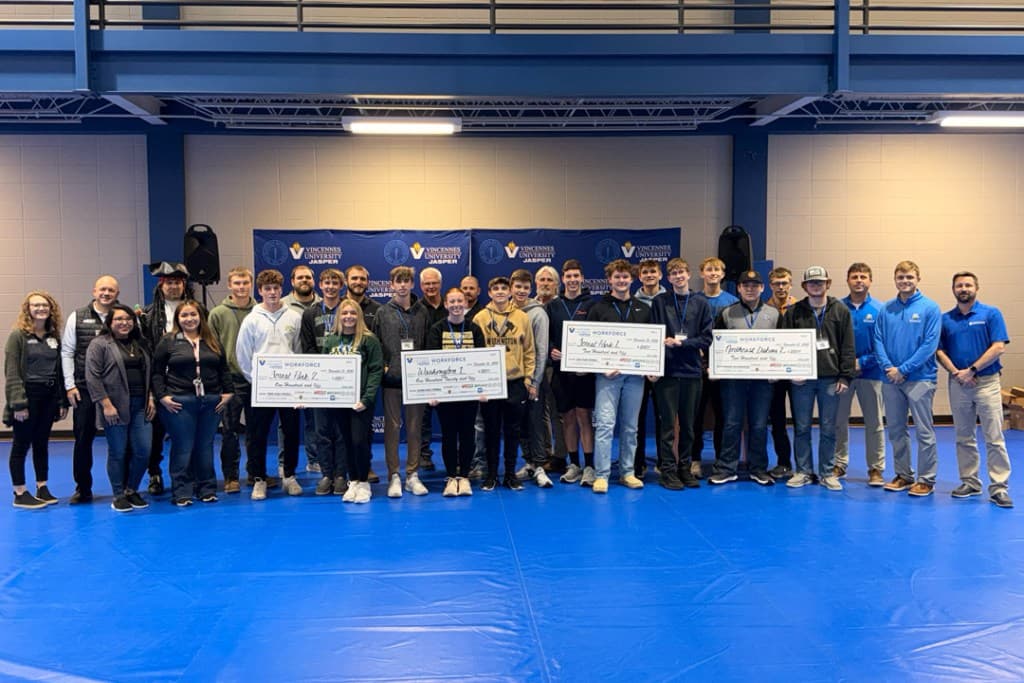Local High School Students Connect With Industry Through STEM Challenge
More than 120 students from across Southern Indiana took part in Vincennes University Jasper's fifth annual CTIM STEM Challenge on November 13, testing engineering and design skills in industry created problems. The event matters to Dubois County because it links local employers with future workers, broadens career pathways and helps build a more equitable regional workforce.

More than 120 high school students from Southern Indiana converged at Vincennes University Jasper on November 13 for the Center for Technology, Innovation, and Manufacturing STEM Challenge, a full day of hands on competition and career exploration. Ten area high school teams worked through industry designed challenges that emphasized engineering, creative problem solving, design and construction skills, real world STEM applications and teamwork.
Organizers said the fifth annual event was intended to introduce students to local opportunities and to strengthen ties between schools and regional employers. Eight Southern Indiana industry partners sponsored and designed challenges, including Jasper Engines and Transmissions, MasterBrand, Kimball Electronics, Kimball International, Waupaca, Farbest Foods, OFS, Wabash Valley and the Southwest Indiana Workforce Board. That mix of manufacturers and workforce development organizations reflects an explicit push to align student skills with local labor needs.
Competition results highlighted emerging local talent. First place went to Bryce Memmer, Kale Wissel, Davin Pund and Chase Niehaus of Forest Park. Second place went to Zack Allen, Carter Rainey, Adalyn Williams and Hunter Killion. Third place went to Izak Meyer, Eli Andry, Luke Meunier and Kate Pund. Beyond medals, students spent the day learning about career pathways in advanced manufacturing, electronics and other technical fields that pay family sustaining wages.
For Dubois County residents the immediate impact is twofold. Students leave with practical experience that strengthens college and job applications, while employers gain an early look at candidates who could fill local openings. The Southwest Indiana Workforce Board participation signals efforts to translate the event into longer term training and placement opportunities, which can matter in towns where retaining young talent is a chronic challenge.
There are also public health and social equity implications. Building a local pipeline of skilled workers can reduce economic stressors that drive poor health outcomes and expand access to good jobs for students from rural and lower income backgrounds. Hands on STEM experiences can open doors to health related technical careers, medical device manufacturing and data analysis roles that support community health systems, even if students do not pursue four year degrees.
Sustaining those gains will require coordination between school districts, higher education and employers to ensure access for all students, including transportation, mentoring and follow up training. The CTIM challenge models how such partnerships can work, but scaling equity will mean funding and policy attention at the county and regional level.
As employers in the region continue to modernize, events like the CTIM STEM Challenge are a practical step toward aligning education with local needs, helping young people see a future in their communities and helping Dubois County strengthen both its economy and its public health resilience.


